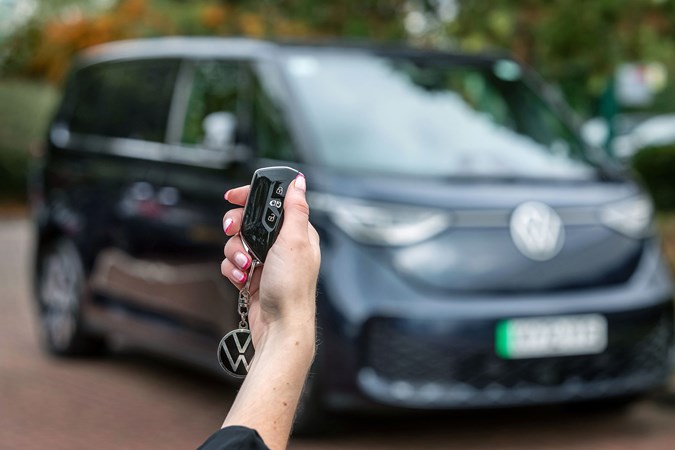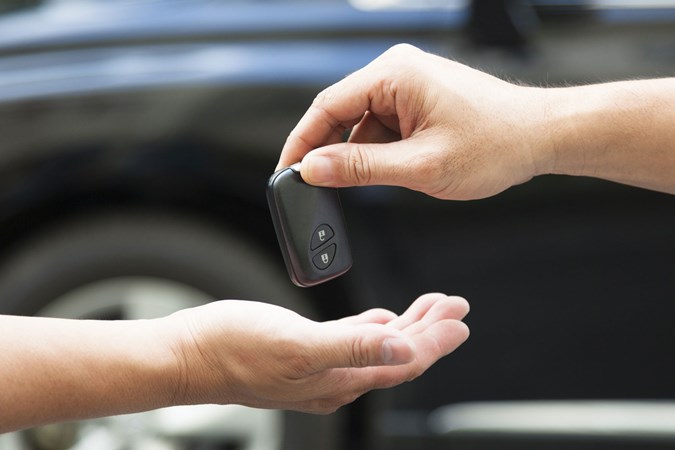Reading through the details of a finance agreement can generate a lot of questions. And, to avoid issues, it’s important to get the answers to each. Particularly, as a case in point, if one of them is ‘What is voluntary termination?’
Voluntary termination is the phrase coined for ending your car finance agreement earlier than the contracted end. Drivers have a legal right to end their car finance agreements early under the Consumer Credit Act of 1974, provided they meet the criteria.
Voluntary surrender is something else – we’ll come onto this – but, for now, let’s focus on what voluntary termination of a car finance agreement is.
Navigation
> Why you might file for voluntary termination
> How voluntary termination works
> Risks
> Early termination of leasing
> What is voluntary surrender?
Why you might file for voluntary termination
The main reasons for filing for voluntary termination of a finance agreement are related to affordability or a change of circumstance.
If the monthly payments are no longer tenable, or if the car no longer suits your needs, you can end your contract early.
Effectively, although there are criteria that need to be met, it gives you the option to end the contract early and return the car.
Best of all, the process is possible without any additional charges, or any negative effects on your credit rating.
How voluntary termination works
It can be utilised to end Personal Contract Purchase (PCP) and Hire Purchase (HP) agreements.
Importantly, it’s a better solution than failing to keep up your monthly payments. Falling into arrears damages your credit score, whereas voluntary termination doesn’t.
To be eligible for voluntary termination you will have had to have paid, or be willing to pay, at least 50% of the contract.
If this is the case, you can terminate the agreement and subsequently will owe nothing once you’ve returned the car. If you’ve paid more than 50% then you won’t get the difference back.

The risks of voluntary termination
The downsides vary depending on how much of the finance you’ve paid off and what damage the car has sustained in the time you’ve had it.
We advise you to periodically take photos of the vehicle, which are timestamped, so you can mitigate any claims the finance company makes for more than ‘wear and tear’.
Since the wording in the contract is deliberately vague, you might find yourself with additional fees if you don’t protect yourself.
If the car is worth more than the remaining payments, you could be better off paying a settlement figure to buy the car and then sell it.
However, you’ve got to have access to enough funds to do this and, if you’re terminating for reasons of financial difficulty, this may not be an option.
It’s also worth bearing in mind that the finance companies will factor in any mileage that is beyond that of the agreed mileage limit of the finance deal. If you’ve exceeded the limit, you can expect additional charges.
How long does it take?
The process should be pretty quick. But finance companies aren’t overly keen on you enacting voluntary termination, so it really depends on your own circumstances and how quickly the finance company deals with the process.
You can make the process quicker by being clear when you ask for voluntary termination. Before starting the process you should:
- Ensure you’ve met the requirements, i.e. you’ve paid 50% or more of the agreement off already and your car has no wear and tear issues.
⠀ - Stipulate you wish to enact ‘Voluntary Termination’ and don’t interchange this with ‘Voluntary Surrender’ – see below for more on this.
Manufacturer help
Here are links to a few popular car manufacturers’ relevant websites. Assuming that you’ve opted for a finance agreement through an official manufacturer channel, you can log in and usually submit your application here.
> Fiat financial services voluntary termination
> Ford credit voluntary termination
> Hyundai voluntary termination
> Jaguar voluntary termination
> Land Rover voluntary termination
> Mercedes voluntary termination
> Nissan PCP voluntary termination
> Peugeot/Citroen/DS voluntary termination
> Renault finance voluntary termination
> Vauxhall finance voluntary termination
> Volkswagen/Audi/SEAT/Skoda/Bentley/Porsche/Cupra voluntary termination

Early termination of leasing
The rules are different for other types of car finance agreements. Handing back a car acquired through leasing – also known as Personal Contract Hire, or PCH – early can be much more difficult and costly, as these agreements are designed not to be broken and do not offer the flexibility built into PCP contracts.
Whether early termination is available with PCH is down to the lender and there could be additional issues if you’ve fallen behind with payments.
Some lenders might insist that you still owe the full value of outstanding payments – whether you hand the car back or not – while others might charge you half the remaining monthly rentals plus any arrears.
Bear in mind that handing a lease car back early could result in you being carless and still liable for a substantial amount in monthly rentals, penalties and fees.
Should you find yourself stuck with a lease car you can’t afford – or one that simply no longer meets your needs – there are a few options.
First off, talk to the leasing company to see if you can refinance or lengthen the contract to drop the monthly payments to an affordable level.
Secondly, you can ask whether there’s any way you can return the car or swap it with minimal fees.
If that doesn’t work, several websites have sprung up where you can find another driver to take over your lease. Some leasing companies might frown upon this or forbid you from effectively sub-letting the car but if all else fails, this could be worth investigating further.

What is voluntary surrender?
It isn’t the same as voluntary termination, so don’t confuse the two. Voluntary surrender is when you give the car back but still have money owed to the supplying company.
For example, you might not have paid the 50% of the total amount payable, or you might not be able to do so, meaning you still owe the finance company all that money.
Using voluntary surrender, you hand the car back and the finance company will then sell it. You will then owe the finance company the difference between what they sell it for and how much you owed.
If, when you make the request to terminate, you interchange these phrases, some less ethical finance companies have been known to seize on the word ‘surrender’ and process a request for voluntary surrender. Not only does this leave you liable for the whole amount owed, but it’ll also negatively affect your credit score.
While voluntary surrender it is more favourable than repossession – since you control some things, such as the time of day you had the vehicle back – you should only consider voluntary surrender if there is literally no other way to work it out.
The Financial Ombudsman Service says lenders can be hesitant to offer this, but you’re well within your rights as a consumer to ask for it. Just don’t get it confused with voluntary termination.











